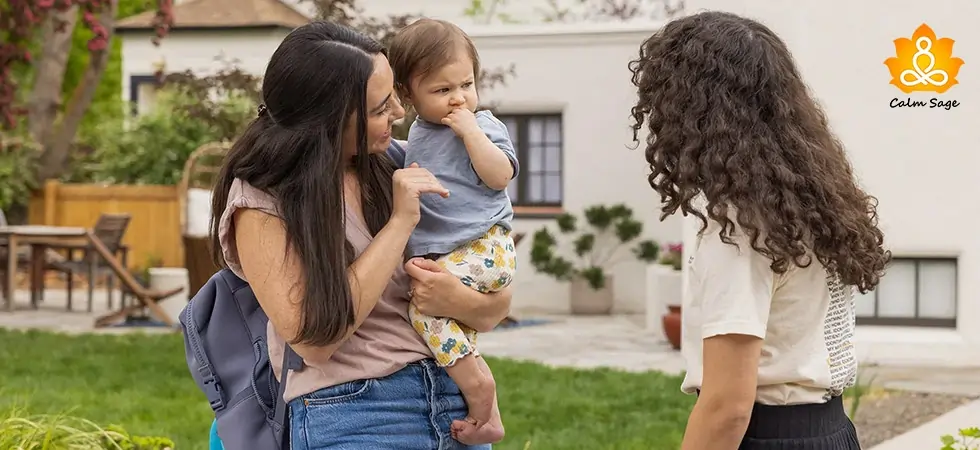Attachment Anxiety: Symptoms, Treatment, Coping Skills, And More

List of Contents
Introduction to Attachment Anxiety
Attachment anxiety takes place when someone experiences anxiety due to relationships with people who are closed to them like parents, partners, friends, and children. In most cases, attachment anxiety takes its roots in childhood. However, attachment anxiety can be persisted in adulthood if handled properly. If the person is negatively affected by the relationship, it may cause attachment anxiety.
If I talk about the history and background of Attachment Anxiety, Attachment theory was first proposed by John Bowlby in the mid-1950s. John Bowlby argued for a sense of security when a child is critical towards a different kind of attachment.
Also Read: Coping Habits That Are Making Your Anxiety Worse & How To Change Them
To keep it simple, when you’re upset, the first thought you get, “It’s okay I can count on my partner or parents.” This mindset is a reflection of what I have understood about Attachment theory till now.
Moving ahead in the direction of psychology, there are four attachment styles followed by adults:
1. Anxious preoccupied: “I really need someone to be with me, but I doubt if they want me.”
2. Dismissive avoidant: “I don’t need anyone, I can do everything myself.”
3. Fearful avoidant: “I am afraid I might get hurt.”
4. Secure: “I am sure that my parents or partner will help me through this.” The first three mentioned attachment styles reflect poor functioning in terms of relationships.
Check What Are The Different Types Of Attachment & Which One Is Yours?
Symptoms of Attachment Anxiety
Below are some common symptoms of Attachment Anxiety:
- Behaviors that drive their partners away.
- Constant demand or need of support or contact from others
- Fear of being unappreciated
- Unsure about counting on the partner
- Hypersensitivity to abandonment and rejection
- Needs of increasing security
- Negative self-worth or self-view
- Positive views towards partner
- Possessiveness over partner
- Wanting to always feel closer
Related read: All you need to know about Ambivalent Attachment
Causes of Attachment Anxiety
The root of anxiety is mostly related to genetics or heredity. Even a four months infant can show the sign of separation anxiety which shows that attachment anxiety is based on behavioral disinhibition.
Attachment anxiety can also be a result of negative childhood experiences. This comprises overprotective parents, neglect, or abuse. Attachment begins when a parent tries to protect their children to survive in a better way.
A child can experience attachment anxiety when they seek constant comfort from parents. If the child does not succeed in this, it can lead to anxiety, distress, or fear. Similarly, this can happen in relationships or friendships when someone asks for constant support or closeness.
Treatment of Attachment Anxiety
Below mentioned are some common treatment modes used for treating Attachment Anxiety:
1. Interpersonal Therapy (IPT)
IPT is an evidence-based approach for treating mood disorders. The only goal of IPT is the improvement of quality of life including relationships and social functioning for reducing stress and anxiety.
2. Cognitive Behavioral Therapy (CBT)
Cognitive Behavioral Therapy (CBT) focuses on changing the negative thoughts and feelings by replacing them with positive vibes and thoughts. The only aim of CBT is to change the relationship between negative feelings and thoughts.
3. Medications
When a person is diagnosed with attachment anxiety and anxiety disorder, the therapist may prescribe medications like selective serotonin reuptake inhibitors (SSRIs).
Coping Strategies for Attachment Anxiety
Most people experiencing attachment anxiety take the help of effective coping strategies that help to reduce the anxiety. Along with therapy, the therapist may prescribe some of the below common effective coping strategies for dealing with attachment anxiety:
- Attending couple therapy so that the secure kind of attachment style can be maintained.
- Choosing a partner with a secure attachment style so that attachment anxiety can be reduced.
- Deciding to move forwards and making new choices that support the idea of having a positive life.
- Finding a friendly therapy so that he/she can help you move from the attachment anxiety.
- Keeping a journal related to your reactions, feelings, or thoughts.
- Learning more about attachment anxiety so that you can live a more positive and healthy life.
- Recognizing people with such attachment styles and helping them throughout such phases.
Indeed, attachment anxiety is something that requires proper handling and counseling. Before concluding anything on your own, fix an appointment with a counselor ASAP for proper management and treatment.
Please Note: We have provided this material as information. It is not intended as a substitute for medical expertise or advice. We strongly encourage you to discuss any decisions about treatment with a certified mental health provider.
I hope this blog helps you to understand Attachment Anxiety in brief. For more such content, follow Calm Sage on all social media platforms.
Thanks for reading.
Next Reads:
Dating Someone With Anxiety | What You Should Do
High-Functioning Anxiety: What Is It & How To Cope With It
8 Surprising Facts About Anxiety You Need To Know!
Coping Habits That Are Making Your Anxiety Worse & How To Change Them




















